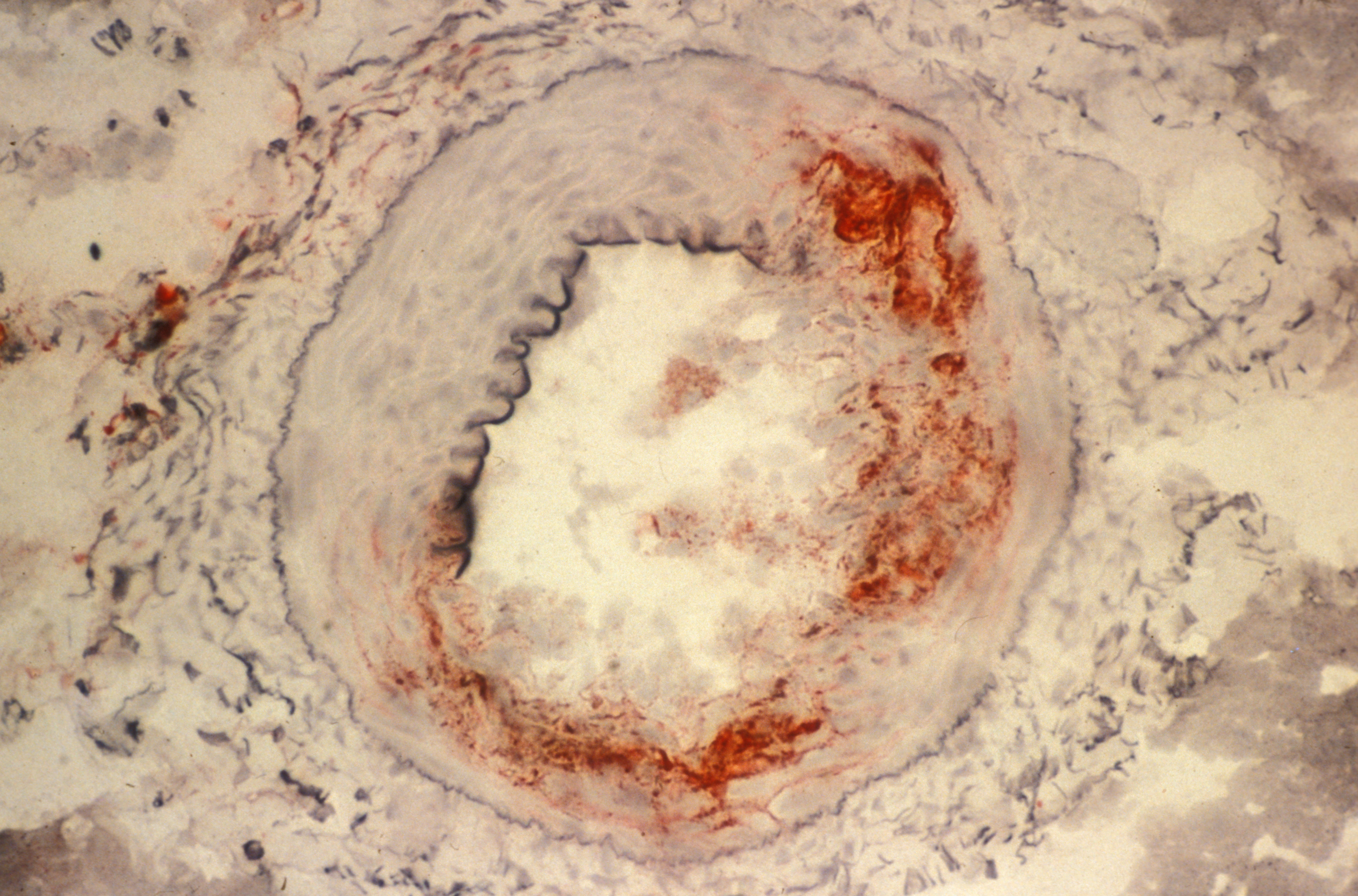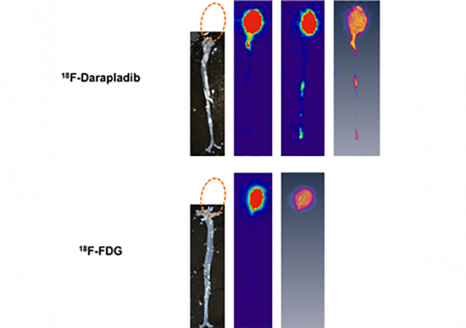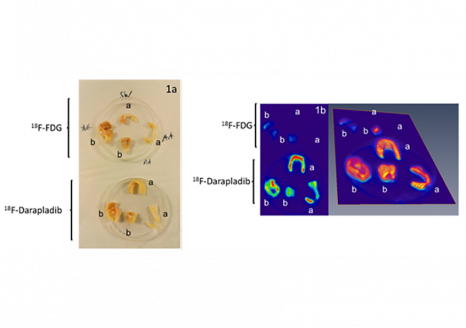Researcher Contact
Olivier Meilhac
Directeur de recherche Inserm
Directeur de l’unité 1188 Diabète – Athérothromboose – Thérapies Réunion Océan Indien (DETROI)
T : +262 262 93 88 11

Dépôts lipidiques dans une artère ©Inserm/Coutard, Michèle
A team of researchers from Inserm and the Université de la Réunion are proposing a new radioactive tracer to locate atheromatous plaques in arterial walls, which can cause cardiovascular events. The agent, called Darapladib, was tested in mice and ex vivo in humans. Darapladib binds specifically to an enzyme that is overexpressed in these plaques, allowing them to be located via medical imaging. The study, published in ACS Medicinal Chemistry Letters, opens up new perspectives to create tools for the clinical prevention of cardiovascular events.
Researchers from Inserm and the Université de la Réunion are making progress on one of these potential tools: Darapladib. The agent was originally developed to reduce the risk of myocardial infarction and cardiovascular death. By exploiting its ability to specifically recognize the Lp-PLA2 enzyme − which is strongly overexpressed in unstable atheromatous plaques − the researchers hoped to be able to slow down or even reverse the plaque formation process. But the agent did not have the expected therapeutic effect. “This doesn’t call into question its very high affinity for Lp-PLA2,” explains Olivier Meilhac, the Inserm research director in charge of the study. “Using it as a tracer in the carotid artery could allow us to identify hazardous plaques and inform the decision of whether or not to operate.”
The machine detects the radioactive signal, showing where Darapladib binds in the body.
Inserm Transfert and the Université de la Réunion have filed for a patent for this new application of an obsolete drug.
The researchers then tested their Darapladib, radioactively marked with fluorine-18, by comparing it with radioactive glucose (18F-FDG), which is routinely used to track cancerous cells. They injected one or the other of these products into the bloodstream of mice with atherosclerosis, then observed the affected blood vessels with PET. Darapladib was highly concentrated in the plaques, but the signal from 18F-FDG was weak.

Figure 1. 18F-Darapladib and 18F-FDG in the aortas and hearts of ApoE KO mice. The hearts were removed to facilitate dissection of the aorta and are represented by a dotted orange circle.
The researchers then incubated these products with fragments of human carotid arteries presenting atheromatous plaques (recovered from surgical operations), and they observed the same results.

Figure 2. Ex vivo accumulation of 18F-Darapladib compared with 18F-FDG in human carotid arteries. 1a) macroscopic snapshots; 1b) PET images; a) uncomplicated plaque; b) complicated plaque.
The value of the Darapladib clinical diagnosis now needs to be confirmed in preclinical and clinical trials to be conducted in the future. It also remains to be proven whether its target, Lp-PLA2, is truly associated with a risk of rupture when concentrated in certain plaques.
Olivier Meilhac
Directeur de recherche Inserm
Directeur de l’unité 1188 Diabète – Athérothromboose – Thérapies Réunion Océan Indien (DETROI)
T : +262 262 93 88 11
Synthesis and Automated Labeling of [18F]Darapladib, a Lp-PLA2 ligand, as potential PET Imaging tool of Atherosclerosis
Florian Guibbal1, Vincent Meneyrol2, Imade Ait-Arsa2, Nicolas Diotel1, Jessica Patché1, Bryan Veeren1, Sébastien Bénard2, Fanny Gimié2, Jennyfer Yong-Sang1, Ilya Khantalin3, Reuben Veerapen4, Emmanuelle Jestin1,2 and Olivier Meilhac1,3*
(1) Université de La Réunion, Inserm, UMR 1188 Diabète athérothrombose Thérapies Réunion Océan Indien (DéTROI), Saint-Denis de La Réunion, France
(2) CYclotron Réunion Océan Indien CYROI, 2 rue Maxime Rivière, 97490 Sainte-Clotilde
(3) CHU de La Réunion, Saint-Denis de La Réunion, France
(4) Clinique de Sainte-Clotilde, 127, Route de Bois de Nèfles, Sainte-Clotilde, Réunion, France
ACS Medicinal Chemistry Letters : https://doi.org/10.1021/acsmedchemlett.8b00643